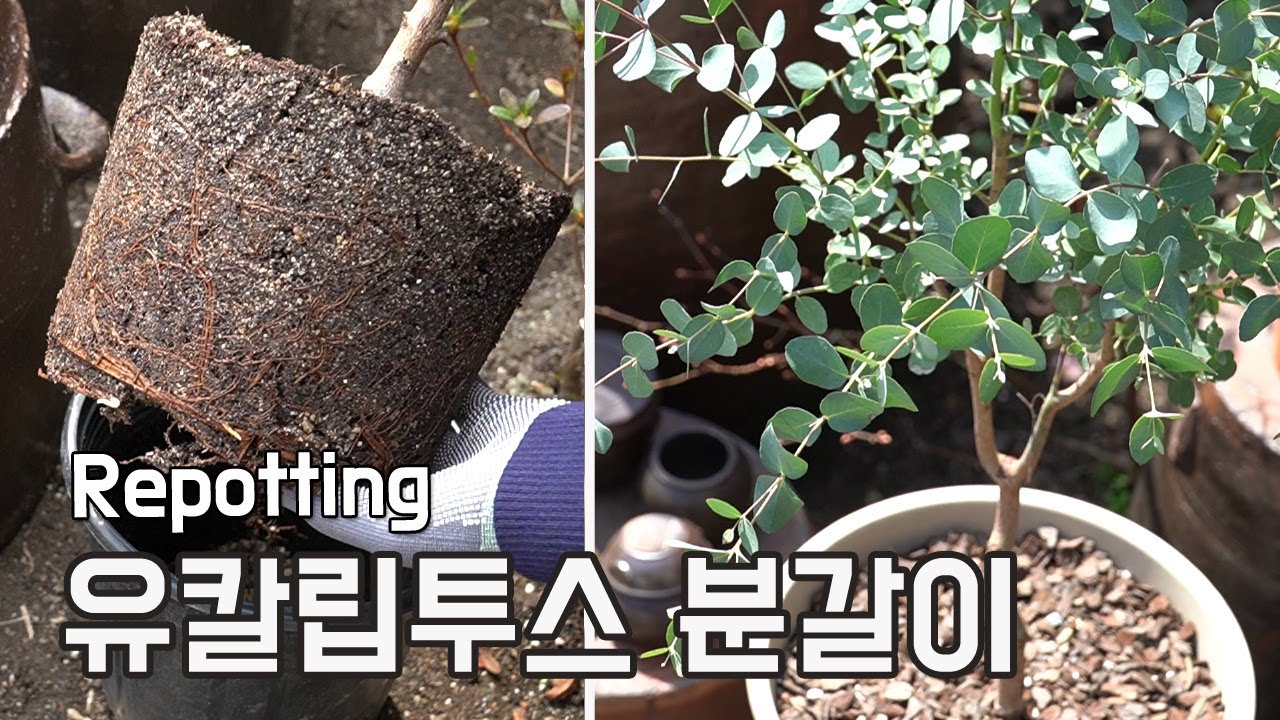Eucalyptus plants are fast-growing evergreen trees and shrubs native to Australia. With their aromatic leaves and ornamental foliage, eucalyptus make excellent container plants and houseplants However, they can outgrow their pots quickly. Repotting your eucalyptus into a larger container with fresh soil allows room for growth and provides nutrients This ensures your plant stays healthy and vigorous. Follow this step-by-step guide to successfully repot your eucalyptus houseplant or outdoor container plant.
When to Repot Eucalyptus
Eucalyptus grown as houseplants or patio plants typically need repotting once a year, in early spring before the growing season begins. Some fast-growing varieties may need repotting twice a year – in early spring and midsummer
Signs it’s time to repot your eucalyptus include:
- Roots growing out of the drainage holes
- Plant becoming rootbound
- Slowed growth
- Frequent wilting and drought stress
Repotting in spring gives the roots time to establish before summer heat Midsummer repotting helps maintain growth.
How Often Should You Repot Eucalyptus
- Repot young eucalyptus houseplants every spring, before growth starts.
- Fast-growing varieties may need repotting twice yearly – in spring and midsummer.
- Move the eucalyptus only 1-2 pot sizes up at each repotting to prevent transplant shock.
How to Repot a Eucalyptus Step-By-Step
Follow these simple steps to successfully repot your container grown or indoor eucalyptus plant:
Gather Supplies
- Eucalyptus plant
- New pot (1-2 sizes larger than current pot)
- Potting mix – Use a peat-based, acidic mix.
- Scoop or trowel for repotting
- Pruning shears to trim roots (if rootbound)
Remove from Current Pot
- Tip the plant on its side and gently slide it out of the pot.
- Loosen any circled or tangled roots. Trim back roots if rootbound.
Prepare New Pot
- Fill the new pot 1/3 full with potting mix.
- Place the eucalyptus root ball in the center so the top is just above the soil.
Backfill With Potting Mix
- Hold the plant straight and fill in around the roots with potting mix.
- Firm the soil gently around the roots to stabilize the plant.
- Leave 1-2″ at the top of the pot free of soil.
Water Thoroughly
- Water well until it drains from the bottom drainage holes.
- Allow excess water to drain fully before returning the pot to the saucer.
Potting Mix for Repotting Eucalyptus
The potting mix you use when repotting eucalyptus is very important. A good eucalyptus potting mix should:
- Drain well to prevent overwatering
- Retain some moisture
- Provide nutrition
- Have a slightly acidic pH (5.5-6)
You can make your own mix by combining:
- 1 part peat moss
- 1 part perlite or sand
- 1 part organic potting soil
- Slow-release fertilizer granules
Or use an acidic potting mix made for azaleas, rhododendrons, or orchids.
Choosing the Right Pot for Eucalyptus
Picking the proper container is vital for healthy eucalyptus growth. Consider these pot options:
-
Pots with drainage holes – Essential to prevent soggy soil. Cover holes with mesh or stones.
-
Plastic nursery pots – Use inside decorative pots without drainage.
-
Air pots – Improve drainage and air prune roots.
-
Weighted pots – Add pebbles to weight down pots and prevent tipping.
Caring for Eucalyptus After Repotting
To help your eucalyptus recover quickly after repotting, provide:
-
Bright light – Full sun is ideal.
-
Frequent watering – Keep soil moist but not saturated.
-
Warm temperatures – Avoid cold drafts.
-
Humidity – Mist leaves if air is very dry.
-
Staking – Support top-heavy plants with bamboo stakes.
-
Delay fertilizing – Resume monthly feedings after a few weeks.
-
Limited pruning – Prune only damaged roots and branches when repotting.
Troubleshooting Problems After Repotting Eucalyptus
| Problem | Cause | Solution |
|---|---|---|
| Leaf drop | Transplant shock | Keep soil moist. Water more frequently until established. |
| Wilting | Damaged roots | Prune back damaged roots. Water more often until new roots grow. |
| Leaf curl | Too large pot | Move to a slightly larger pot. Water thoroughly after repotting. |
| Leaf yellowing | Lack of nutrients | Replace old soil and fertilize monthly after recovery. Ensure drainage. |
| White fungus on soil | Harmless salt deposits | Allow soil to dry out more between waterings. Leach out mineral salts monthly. |
By following proper technique and aftercare when repotting, you can keep your eucalyptus houseplant or patio plant healthy and actively growing. Repotting prevents your fast-growing eucalyptus from becoming overgrown and rootbound in its pot. Pay close attention to pot size, drainage, light, and watering after repotting to avoid shock and promote quick establishment. With the right care, your repotted eucalyptus will grow vigorously, filling its new container with abundant bright green foliage.

How to grow Baby Blue Eucalyptus Plants at Home Indoors & Outdoors
FAQ
When should I repot my eucalyptus plant?
Water the tree thoroughly. Repotting should be done every 2-3 years to prevent the roots from becoming root-bound.
Does eucalyptus do well in pots?
Eucalyptus grow very well in containers, provided you stick to their rules!
What kind of soil does eucalyptus need?
Eucalyptus likes well-drained, consistently-moist soils that are slightly acidic with a pH of 5.5 to 6.5.
What is the best potting mix for eucalyptus?
Move the plant to a container with a drain hole, one or two sizes larger than the last one and use equal parts of an organic potting soil, perlite or sharp sand for drainage, and peat moss. Some types of Eucalyptus need mildly acidic soil. Make sure that you get the entire root structure covered with potting mixture.
